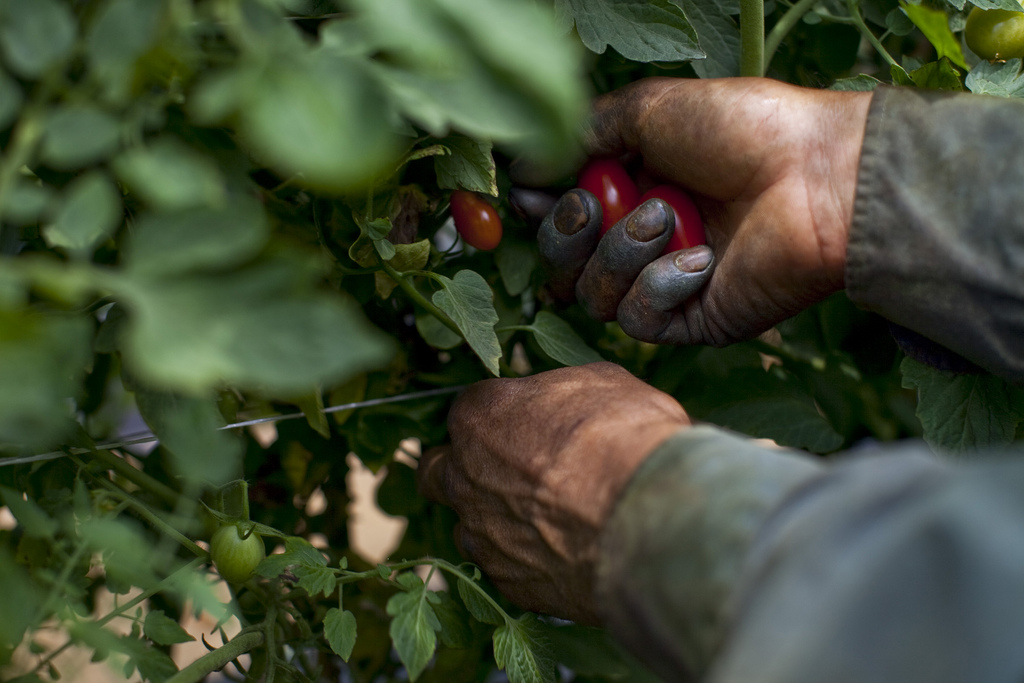It’s been a long week.
Between events and lectures on campus, my work with the Food Systems Working Group, all of my seemingly disjointed readings, the inauguration, and the Women’s March, my head feels like it’s spinning.
In an attempt to screw it back on and debrief all that I’ve learned this week, I’ve organized my findings into a categorical list of potential remedies to food insecurity. Enjoy!
Government Transfers:
Although The Economics of Inequality is both a little outdated, VERY dense with economists’ jargon, and has nearly nothing to do with food, on the issue of economic inequality, (poverty being the first and foremost reason for food insecurity) there was a definite theme I found in his analysis of data and previous literature.
“It is therefore clear that social charges are not paid out of capital income. This is a crucial facet, since it implies that modern systems of social protection, which are central to today’s system of redistribution and which are based on the idea of dividing social costs between capitalists and workers, have not in fact redistributed income from capital to labor; labor income has absorbed the full cost… The goal is no longer to abolish private ownership of capital, tax profits, or redistribute wealth. The instruments suitable for dealing with labor income inequality go by other names: taxation of top incomes and fiscal transfers to those with lower incomes… ” (Piketty 1997: 47, 66)
Tax the rich and use the money to help poor people. A very rudimentary and steadfast ideological solution to decreasing poverty. So the issue then becomes, how? How an educational institution, let alone a singular person, do that? By the nature of macroeconomic capitalism, it must be the government. So how do I get the government to do that?
Funnily enough, at the Pre-Inaugural Teach-In on Thursday, I was inspired by Carolyn Prouty who spoke to the power of citizen lobbying and organizing. She outlined effective tools as uniting via town halls, coordinated calls and district meetings.
Utterly jazzed at the prospect of creating a change at the legislative level, I did some research on new Washington state bills going to committee in the near future. Just so happens I found House Bill 1569 – a bill so fresh out of the oven it hasn’t even gone to committee yet.
It’s a bill “requiring the department of social and health services to request all necessary exemptions and waivers from the federal government to allow students to use electronic benefit transfer cards at institutions of higher education.”
Even though there would be many hoops to jump through in order to activate such measures on the Evergreen campus, especially when the only vendor on campus that would lawfully be allowed to accept EBT cards is the POD Market, I made sure to subscribe to email notifications on the happenings of this bill.
Financial Literacy:
I have to credit Sarah for this one. She emailed me a very poignant study entitled Financial Literacy and Food Security in Extremely Vulnerable Households.
So how then, does knowing how and when to spend your money affect food insecurity?
“In terms of food insecurity, our estimates from specification in Table 2 point to a marginal effect of 18 percentage points. This implies that an intervention that improves the financial literacy of all households in the U.S. by one standard deviation… would be expected to reduce the number of food insecure households in the U.S. from 17.5 million to 14.4 million (based on 2013 figures).” (Millimet 2015: 14)
These findings are both surprising and exciting to me. Although it may not address systematic, fundamental causes of food insecurity, financial literacy education seems like something a higher education institute could swing with relative ease.
Better Access to Food:
Another causal factor of food insecurity is access to food: As of 2013, 23.5 million Americans live in food deserts, 75% of which live in urban areas. (A fact I gleaned from my viewing of A Place at the Table last week)
How do we reconcile that? Jennifer Blecha, one of the food policy faculty potential hires, presented a research project that she is currently involved in regarding urban food production. Although her study concerns community orchards, she reported that there are about 18,000 community gardens in the US. When prompted, she admit that most of these community gardens do not yield significant enough quantities of produce to actually make an impact on food insecurity in poorer areas, but they do have “community building” benefits.
That’s something we see right here on our Evergreen campus – most community garden plots are not used to feed food insecure students because often times, the students who need food the most are too preoccupied with school and work to have the copious amount of time it takes to grow their own food.
Because of this conundrum, one of my points of investigation in the coming weeks will be to find out how getting better access to affordable, healthy food is achieved. As I discovered at the Food Advisory Committee on Friday, Aramark’s strategy to address Evergreen students’ dissatisfaction with the availability of affordable food is simply better comparative pricing signage. (*Eye roll*)
Food Costs:
This is where it gets a little trickier for me. After the Food Advisory Committee I was hellbent on pushing for more affordable, healthful food.
And then I watched Food Chains, a documentary about the oppression of migrant farm laborers in the United States. The reason why the cost of produce hasn’t risen dramatically over the years is because supermarkets set the market price, which leaves laborers making less money because the cost of production has risen while the market price has not. These laborers, being at the bottom of the supply chain, get paid often well under the minimum wage, and ironically, are often food insecure themselves. Obviously farm workers rights are important, and personally, I am willing to pay more for my food to ensure their fair compensation. But what about the people who can’t afford food at the price it is right now? Ideally, we would have the supermarkets and food corporations swallowing some of their profit to make up for the higher cost of labor, but realistically that will not happen any time soon.
So how do we create social and economic responsibility around food? This is something I will be chewing on in this coming week. (Pun intended.)
If you’ve made it this far without dozing off or going cross-eyed, congratulations. I am impressed and I thank you for considering the synthesis of my inquiries.
Until next week.


January 24, 2017 at 12:01 pm
Hello Natasha. Shani here, again.
Nicely done, being so active.
Well, here we are at the same conundrum we mulled over last week: the commodification of food. As you end your weekly synthesis you ask how people who can’t even afford the price of food now should be able to pay the price of food which internalizes the true price of labor.
After seeing Food Chains you’ll know that all the farm workers are asking for is a 10 cent increase on the whole sale buying price when dealing with supermarkets. After last week’s seminar, you’ll also recall that “10-20 cents” make up the actual price of production and the rest is split between distribution, advertising, and the rest (though I think that’s low-balling it). We’re left asking what supermarkets would stand to lose if they did agree to the 10 cent increase?
Looking at the ACA and programs like it, America seems to be heading in the direction of dispersing the value of the externalized costs of poor health, which as you saw in A Place at the Table, includes silent starvation, among the public. Here I’ll bring back what I said last time: we can do the same thing for food. We can subsidize food costs so low income people get the food they need, we do that already with food stamps.
However, because food stamps share the same budget as big farms as dictated within the Farm Bill, the allowance people get with food stamps is in a constant tug-of-war with the subsidies given to Big-Ag.
Which brings us closer to a solution. America doesn’t allot much money to the farm bill in comparison to other facets (like the military), so maybe the Farm Bill should be given a bigger budget? Step one. Step two; maybe Big Ag should step away from their monocrop production? Sure corn produces lots of dense calories, but if you read Restoration Agriculture by Mark Shepard and check out the true break down of corn, you’ll see that all those acres of it don’t account for much in the grand scheme of things. So maybe the
Farm Bill should start subsidizing smaller, local farms to close up the food deserts and limit the amount of travel miles required, thus lowering the cost. Then farmers can get closer to selling directly and reap more profit for their labor.
Do the above solutions satisfy the “both/and” aspects of the problem? Maybe. People still need to eat throughout the duration of this reform, so how are they attended to? This is a question best left to those being paid to answer it, which is not me.
You’ve got the right idea though: legislation. We must be active participants in democracy. Farmer activism is still a way to be part of the agricultural community and it’s super important. So keep it up because farmers and eaters need you~
Furthermore I’m reading the Vertical Farm by Dr. Dickson Despommier where he’s talking about the prospect of farming within very tall buildings using hydroponics, aquaponics, soil farming, and solar power in the center of cities. He illustrates how grey water can be transformed into drinking water through plant evapotranspiration. He lists 11 benefits of farming vertically: year-round crop production; no weather related crop failures; no ag runoff; the ecosystem can restore itself; no cides or ferts needed (I question that); use 75-90% less h2o; reduce food miles; more control over food safety and security; new employment opportunities; purification of grey water to drinking water; and animal feed production through plant harvest materials. What do you think about this?
Thanks for sharing.
Shani A